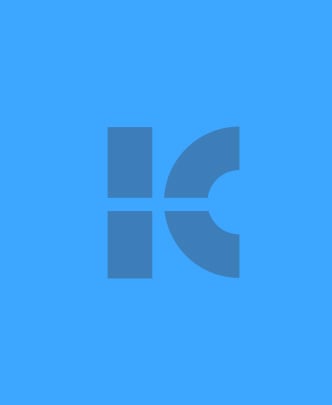
How to Create the Right Sales Promotion Strategy

In 1887, Coca-Cola was looking for a way to introduce its new beverage. A marketing whiz named Asa Chandler created the idea of offering people one free glass — and a superstar beverage was born.
Chandler could not have predicted that the world of promotions, inspired by his marketing breakthrough, would be transformed over 100 years later. But Coca-Cola’s success belies a downside of promotions — their potential for eroding value. Price erosion occurs when a company feels forced to lower its prices, but in the process also lowers the perceived value of its products.
Over discounting is a common marketing mistake. When business is slower than desired, companies assume that by launching more promotions, they can generate new customers and increase sales. So, they turn to promotions to help them increase their revenue. They believe discounts will bring customers who will return for more. But that strategy rarely works. Too often, consumers begin to expect lower prices, and so they avoid buying at regular prices, which leads to a consistent loss over time.
The Risks of Too Many Promotions
New businesses in particular are at risk of the promotion trap. They often believe that the best way to generate initial sales and drive brand awareness is to offer frequent discounts. It’s understandably an easy mistake to make. But while promotions can produce a bump in sales, the chances of that bump being short and sweet are high. The risk is that the business will erode the perceived value of their products, services and brand and actually lose customers while chasing revenue through discounts.
In a 2017 study, researchers analyzed about 677,000 transactions. The results showed that deep discounting, accompanied by a blitz of advertising promotions, did achieve retailers' goal of attracting more customers and increasing overall profits in the short term. But that finding came with several caveats. For one thing, promotional discounts on both high-penetration, high-frequency items (such as staples) and low-penetration, low-frequency items (such as alcohol) led to increased traffic but lower sales per transaction.
A study by Nielsen found that eliminating 22% of promotions would actually help companies increase their sales revenue. Achieving that goal requires a smart sales promotion strategy that helps you make the right decisions.
Why You Need a Sales Promotion Strategy
A sales promotion strategy, also known as a discounting strategy, is a marketing approach designed to motivate customers to take specific, predetermined actions through sales discounts, incentives and offers. Your promotion strategy isn’t just the marketing campaigns you run, and it’s not limited to discounts. While those are part of the strategy, your overarching promotion plan needs to consider dynamic, evergreen and personalized promotions as well.
The best promotion strategies build in sales promotions at every stage of the marketing funnel, for example:
- Awareness: use welcome coupons
- Consideration: include free shipping
- Conversion: give free samples or gifts with purchases
- Loyalty: offer referral bonuses
- Retention: offer a buy one get one free (BOGO) deal
4 Steps to Creating an Effective Sales Promotion Strategy
Here’s a brief introduction into the steps for creating an effective, long-term sales promotion strategy.
1. Set Objectives and Key Results (OKRs)
Set both your objectives and key results before launching your first sales promotion. Objectives focus on the ideal outcomes. In other words, what your project, team or strategy needs to accomplish. Next, determine which key results and metrics you’ll measure to determine your success.
Set two to three objectives that meet your leading business goals. Some examples include:
- Improve customer retention and reduce churn
- Increase ecommerce channel profitability
- Improve customer experience via personalized offers
- Optimize every stage of the buyer journey
2. Choose Your Discounts and Sales Incentives
There are two basic categories of promotions: evergreen incentives and limited time offers. In a well-rounded strategy, they work together to achieve your OKRs.
Evergreen incentives are offers and discounts that stay relevant over time, such as upsells, welcome coupons, subscriber discounts and referral discounts. They remain static on your website and are not tied to any particular campaign. These discounts should not be available to all customers all of the time. Customers should be served offers that are personalized to their behaviors, demographics and customer journey stage and presented at the most opportune times.
Limited time offers are promotions that run for a fixed period of time. They are relevant only for a specific event, season or campaign. Examples include product launch offers, inventory clearance discounts and seasonal promotions.
3. Determine Segmentation Guidelines
Once you know the price discounts and sales incentives you’ll offer, you need to determine who will get them. Applying every promotion to every customer or prospect can do more damage than good to your brand perception, profitability and customer lifetime value. This requires leveraging the art and science of segmentation. Determine the criteria that will trigger your offers to specific customers and prospects at specific times.
Not only should you segment your customers and projects according to their propensity to respond to your promotions at specific times, you should also segment your promotions themselves based on their ROI potential. There are four main types of promotions:
- Top performers: They bring both high-volume lift and high ROI.
- Value generators: They are profitable and generate returns, but their volume lift is substandard.
- Volume generators: They deliver high volume lift but generate low returns.
- Value eroders: They yield negative ROI and have limited volume lift.
4. Send Your Promotions to the Right Customers at the Right Time
The final step is getting your sales promotion offers in front of the right customers at the right time in their buyer’s journey.
There are two ways to reach consumers and prospects with your promotions: on your own website or on offsite digital channels.
To optimize promotions offered on your own platform, use personalization based on key data.
To optimize promotions offered on other digital channels, you’ll need to do two things:
- Drive awareness to members of your target audience who have not yet visited your website
- Re-engage the customers who left your site without converting
Once you drive customers and prospects back to your website, enter their data into your system. Then begin sending them the right offers at the right times.
Start Your Sales Promotion Strategy
Sales promotions are a valuable marketing tool, but they can backfire. Having a smart sales promotion strategy that includes these four steps can help ensure that your promotions not only win you sales, but also keep your brand strong over the long term.





